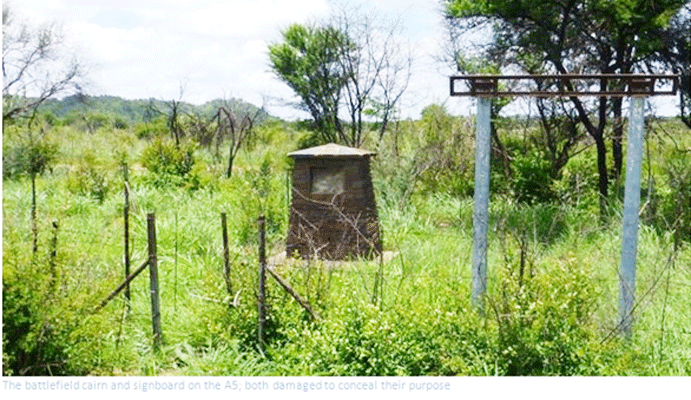
FOLLOWING publication of last week’s article where the government designated Pupu shrine in Lupane as a national monument, yours truly was inundated with questions on where the Shangani battle between the early settler forces and Matabele warriors actually took place.
travelling & touring:with Burzil Dube
Pupu is situated less than 10km from Shangani River and it is where Major Allan Wilson and his troops were defeated by the Matabele army of King Lobengula on December 3, 1893.
There have been questions by historical tourists on when as well as the place the actual Battle of Shangani took place due to various versions that have been proffered in the past.
It has in the past been asked whether the “real” war between Matabele warriors and the pioneer settler forces was fought in October 1893 in what is now known as the Battle of the Shangani (River) or on December 3, 1893 at Pupu.
However, others are of the opinion that the turning point on demise of the Matabele under King Lobengula was during Pupu Battle, when the warriors managed to vanquish settler forces, who had during that time modern firepower at their disposal.
In this week’s Travelling and Touring article yours truly will briefly try to dedicate this particular article to the Battle of the Shangani, which is also an interesting piece of untapped historical tourism.
Once again as for reasons behind this epic battle that was fought on the shores of the Shangani River, we leave it to historians and researchers who could be more conversant with the events leading to this particular war.
- Chamisa under fire over US$120K donation
- Mavhunga puts DeMbare into Chibuku quarterfinals
- Pension funds bet on Cabora Bassa oilfields
- Councils defy govt fire tender directive
Keep Reading
This battle is said to have taken place on October 25, 1893 between Lobengula’s forces and the early settler forces whose mission was to try and destroy what they considered a “problematic” Ndebele kingdom.
During that particular time, Lobengula’s forces were reportedly described as disciplined by precolonial standards whose astuteness with the stabbing spear was very impressive. no tribe dared to stand up against them.
The Matabele army had also a couple of Martini Henry rifles, which were rarely used during that particular time due to lack of training as the Matabele preferred their traditional weapons.
The settlers’ Fort Victoria and Salisbury columns arrived at the banks of Shangani River on October 24, 1893 where it is reported that the more than 1 000 riflemen crossed through what today is a major bridge along the Bulawayo-Gweru highway.
The bridge is situated a few kilometres northeast of the modern-day Shangani business centre.
The epic battle took place the following day.
It was somewhere near the Shangani River where the Matabele army under the command of Mtshane Khumalo and another induna known as Manonda numbering around 5 000 warriors made a blitzkrieg attack against the settler forces.
They were, however, no match to the superior firepower of settler forces.
However, Manonda is believed to have been killed in action while Mtshane and the other surviving warriors retreated to safety as they could not withstand the superior firepower which comprised of Maxim guns, cannons and rapid fire guns.
The Shangani Battlefield was designated as a monument in 1937, but very few people seem to know the exact place where the war actually took place save for some publications stating that it was on an open grass plateau.
However, there is a cairn constructed on the left side of the Bulawayo-Gweru highway which a few years ago was written “Shangani War Memorial”.
This particular feature is today surprisingly unmarked and situated less than a kilometre from Shangani business centre.
Anyone travelling along this major road can easily see and is able to access it as it also a major tourist attraction place.
On why the name on the signpost was removed, yours truly is still to decipher this important piece of early settler history.
The same also applies to Pongo Memorial whose obelisk-shaped monument is situated less than 500m opposite the above-mentioned Shangani war memorial.
The last time yours truly visited the place, it was rather inaccessible due to overgrown grass despite it being located next to the main road with a signpost written Pongo Memorial.
This monument commemorates the early civilian prospectors, traders and farmers who were killed in the area during the Matabele Uprising in 1896.
So, to those driving along this busy highway, there is need to spare a few minutes to pay a brief visit to these two places which are adjacent to Shangani business centre.
Please be advised that there are no entry or any other related fees charged.
That would be historical tourism at its best.
However, before yours truly signs off, let us all remember that a second wave of Covid-19 is upon us and let us religiously follow laid down health procedures. Till we meet again in the next column.
l Comments always welcome on: [email protected] or Twitter: @DubeBurzil











